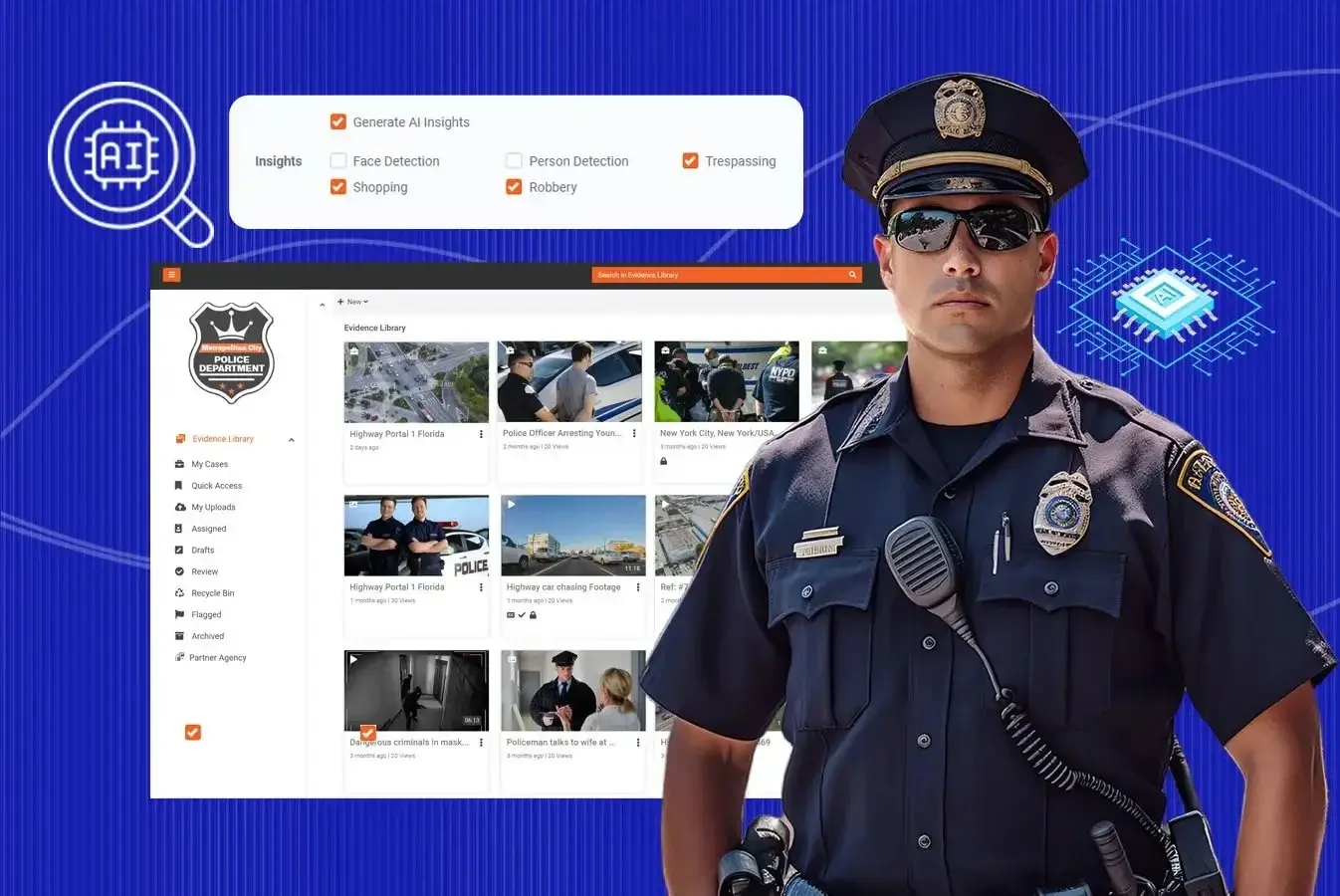A Short Guide to Natural Language Processing (NLP) For Audio Content
by Rafey Iqbal, Last updated: November 19, 2025, Code:
%20for%20Audio-Visual%20Content.webp)
You’re drowning in media content but not in insights. You’ve got hours of video content from training sessions to webinars and marketing campaigns, yet you can’t efficiently access or use it. Sure, you've got a ton of raw media, but what good is it when it’s unsearchable, untagged, and practically buried in digital oblivion?
Sound familiar? That’s the pain point that many content managers, IT directors, and compliance officers grapple with daily.
The problem isn’t just managing the volume of content. It’s about maximizing its potential. With today’s demand for accessibility, localization, and compliance, how do you ensure that every video, podcast, and audio file is properly tagged, transcribed, and ready for global consumption?
Feeling tensed? Here's the good news: Natural Language Processing (NLP) has the answer. Let’s dive into this blog.
What is NLP in Audio-Visual Content?
NLP, or Natural Language Processing, is the branch of artificial intelligence that focuses on the interaction between computers and human language. Traditionally, it’s been used for text-based applications like chatbots, sentiment analysis, and search engine optimization. However, NLP’s power extends far beyond simple text.
When applied to audio-visual content, NLP can analyze spoken words, extract meaning, and automate a range of functions like transcription, translation, and sentiment analysis. This is groundbreaking for any organization that manages large volumes of multimedia content because it enables you to transcribe audio in searchable text, generate automated translations for global audiences, tag metadata for easy indexing and retrieval, and perform sentiment analysis to gauge audience reactions in video content.
Sounds great, right? But the real question is, Why do you need this as a content manager or IT director? And how does it solve your business problems?
Managing Content Is Time-Consuming, Costly, and Inefficient
Let’s face it: managing video content manually is a nightmare. You either waste hours transcribing videos and tagging content, or you outsource the job, paying hefty fees for transcription, translation, and metadata services. Neither option is scalable, especially when dealing with increasing content volumes every month.
Here are just a few of the headaches you might be experiencing:
Time-Consuming Transcription
Transcribing videos by hand is a time-consuming and labor-intensive process that can significantly hinder productivity. You may have entire teams dedicated to this, but it still slows down your process and is prone to errors.
- Lack of Accessibility: Accessibility is a crucial aspect of video content, ensuring that the content is accessible to a wide range of individuals. Videos without captions or subtitles limit accessibility, leaving out non-native speakers or individuals with hearing impairments. This can be a compliance issue, especially in regulated industries.
- Localization Challenges: Reaching global audiences requires creating content that resonates with diverse cultures and languages. To reach global audiences, you need translations within no time. But how can you do that without incurring excessive costs and delays? Doing this manually is not an option since it is a complex and time-consuming process involving cultural adaptation and technical considerations.
- Unsearchable Media: Metadata is essential for organizing and searching video content effectively. Without proper metadata tagging, your media content becomes an unsearchable mess. Finding that one crucial training video or compliance recording takes way longer than it should.
- Content Oversight: In industries with strict regulations, such as healthcare, finance, and government, you need to ensure every piece of content complies with legal standards. Manually reviewing hours of video is inefficient and leaves room for error, leading to fines, penalties, and reputational damage.
How NLP Solves These Problems for Your Business
This is where NLP for audio-visual content enters the scene.
Automated Video Transcription
One of the biggest benefits of applying NLP to media content is automated transcription. Gone are the days of manually converting hours of footage into text. NLP algorithms can not only transcribe spoken words but also apply timestamps, speaker diarization, and even summarize key points.
For example, a corporate trainer who records hours of video-based training sessions can instantly convert them into searchable transcripts. Now, employees can easily search for specific terms or topics discussed in the video without having to sit through hours of footage.
Improved Accessibility
Accessibility isn’t just a nice-to-have. In many industries, it’s a legal requirement. NLP can automatically generate closed captions and subtitles, ensuring your content is accessible to everyone, including non-native speakers and those with disabilities.
For instance, a compliance officer in a healthcare company can ensure that every training video is captioned, meeting ADA requirements and avoiding legal pitfalls.
Automatic Translation
With global markets at your fingertips, localization is key. NLP can instantly translate audio into different languages, making it easier to reach non-English speaking audiences without paying exorbitant translation fees.
For instance, a marketing director wants to push a product video across different regions. NLP allows for quick, automatic translation of video dialogues, making the content market-ready for various countries.
Metadata Generation
How do you manage hours of media content without spending time manually tagging each file? NLP tools can analyze the content and generate relevant metadata. From identifying key topics discussed in a video to recognizing speakers and sentiments, NLP can turn unstructured media into searchable assets.
For instance, a video content manager can use NLP to automatically tag thousands of videos with relevant keywords, making the library easily searchable for anyone in the organization.
Sentiment Analysis
Imagine understanding how your audience feels about the content you’re presenting. NLP-powered sentiment analysis can gauge emotions from spoken words, helping you understand whether your training sessions, marketing videos, or corporate presentations resonate with the audience.
For instance, a marketing director analyzing customer testimonial videos can automatically detect positive or negative sentiments, helping tailor future campaigns.
How Enterprise Video Platforms Use NLP
Enterprise video platforms incorporate advanced NLP capabilities into our platform to help you:
- Automate transcription and translation: Easily transcribe videos in real-time and generate translations across multiple languages, saving time and reducing manual labor. Automated tools often provide more accurate transcriptions and translations than manual methods, reducing the risk of errors and ensuring that content is accurately conveyed.
- Generate searchable metadata: NLP automatically tags your content with relevant keywords, making it easy to find the right video at the right time.
- Enhance accessibility: Automatically create closed captions and subtitles to ensure your videos meet compliance requirements and are accessible to all viewers.
- Track speaker sentiment: Get real-time sentiment analysis to analyze the true sentiments of speakers in the video content.
---------------------------------------------------------------------------------------------------------------------------------------------------------------
Join VIDIZMO at GITEX EUROPE 2025

Discover VIDIZMO AI solutions for enterprise video content management, digital evidence management, and redaction at Europe’s largest tech event – GITEX EUROPE 2025.
See how computer vision, natural language processing (NLP), generative AI, enterprise LLMs, and intelligent document processing (IDP) solutions can help you automate your existing manual processes and speed up business workflows.
Be part of the AI revolution and engage in live demonstrations and expert discussions. Visit our GITEX EUROPE 2025 page to learn more.
---------------------------------------------------------------------------------------------------------------------------------------------------------------
Why You Should Invest in NLP for Audio-Visual Content
Natural Language Processing (NLP) for audio content is a game-changer for organizations overwhelmed by unsearchable and untagged media. As explored in this guide, NLP automates transcription, translation, metadata tagging, and sentiment analysis, making your audio and video content searchable, accessible, and ready for global audiences.
By leveraging NLP, you can save time, reduce costs, and ensure compliance, all while unlocking valuable insights from your media library.
Embracing NLP for audio content is no longer optional for businesses aiming to maximize the value of their digital assets. With automated solutions, you can streamline content management, enhance accessibility, and reach new markets effortlessly. The transformation from manual processes to AI-powered workflows positions your organization for greater efficiency and growth.
Ready to experience the benefits of NLP for audio content? Contact us or explore AI Services with VIDIZMO today and see how easy it is to turn your media library into a strategic asset.
People Also Ask
What is Natural Language Processing (NLP) for audio content?
Natural Language Processing (NLP) for audio content uses artificial intelligence to automatically transcribe, translate, tag, and analyze audio files, making them searchable and accessible for users and organizations.
How does NLP for audio content improve searchability?
NLP for audio content enhances searchability by converting spoken words into text, extracting key topics, and tagging metadata so users can easily find specific information within large audio libraries.
Can NLP for audio content handle multiple languages?
NLP for audio content can automatically translate audio into several languages, enabling organizations to localize their media for global audiences without manual translation efforts.
How does NLP for audio content support compliance and accessibility?
NLP for audio content generates accurate closed captions and subtitles, ensuring that audio and video files meet accessibility standards and legal compliance requirements for diverse audiences.
What are the benefits of automated transcription in NLP for audio content?
Automated transcription in NLP for audio content saves time and reduces errors by quickly converting speech to searchable text, allowing organizations to manage and retrieve audio files more efficiently.
How does NLP for audio content perform sentiment analysis?
NLP for audio content can detect emotions and tone in speech, helping organizations understand audience reactions or customer feedback by analyzing the sentiment behind spoken words.
Why is metadata tagging important in NLP for audio content?
Metadata tagging in NLP for audio content automatically labels audio files with relevant keywords, topics, and speakers, making organizing, searching, and retrieving content from large media libraries easier.
What challenges does NLP for audio content solve for content managers?
NLP for audio content addresses challenges like time-consuming manual transcription, limited accessibility, localization barriers, and compliance risks by automating key processes and improving efficiency.
Is NLP for audio content cost-effective for large organizations?
NLP for audio content is highly cost-effective for organizations with large media libraries, as it reduces manual labor and operational costs associated with transcription, translation, and tagging.
How do enterprise platforms use NLP for audio content?
Enterprise platforms use NLP for audio content to automate transcription, translation, metadata generation, and sentiment analysis, streamlining media management and enhancing content accessibility and compliance.
Jump to
You May Also Like
These Related Stories
%20for%20Audio-Visual%20Content.webp)
How Enterprise NLP Transforms Unstructured Data into Business Insights

Why is Artificial Intelligence Essential for Law Enforcement Today?



No Comments Yet
Let us know what you think